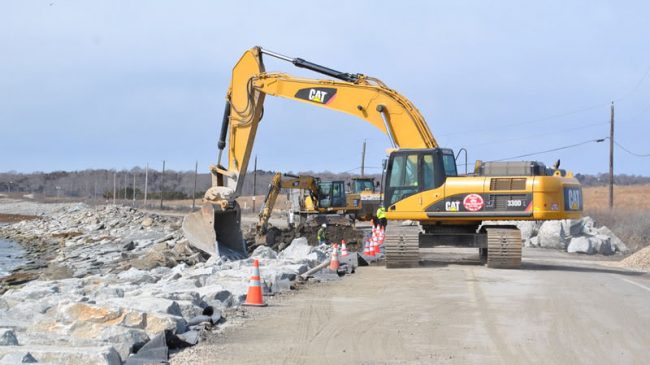“On infrastructure, I will ask Congress to pass legislation that produces $1 trillion of new investments in America’s crumbling infrastructure,” Trump said during his recent victory tour speech in North Carolina.
Trump’s $1 trillion proposal seems to be based on a paper released during the campaign by UC Irvine professor Peter Navarro and investor Wilbur Ross, whom Trump says he will nominate for Secretary of Commerce.
The focus of the plan is to rebuild aging infrastructure, and to do so without a major federal tax increase. Roads and bridges will get a lot of attention. The only alternative funding source to taxes for large-scale highway and bridge replacement is tolls. Toll-financed Interstate highway and bridge replacement alone has been estimated as a $1 trillion-plus program over several decades. Thus, all Congress needs to do — potentially as part of authorizing a trillion-dollar Trump rebuild America program — is allow states the option to use tolls for these projects.
In the surface transportation area, the existing Transportation Infrastructure Finance and Innovation Act loan program has a proven track record in providing part of the financing for public-private partnership projects. If infrastructure bank proponents in Congress can be persuaded to create an entity that operates in the fiscally conservative, taxpayer-friendly way that TIFIA is now run, that change might be acceptable to a bipartisan majority of legislators. It would provide only loans, and projects would require an investment-grade rating. This enlarged loan facility could include assisting state and local governments to finance P3 refurbishment of infrastructure that lacks a significant user-fee revenue stream.
The Trump program is applicable to the other kinds of infrastructure, including airports, seaports, and water and wastewater systems. These types of projects already have user fees: airport runway and per-passenger charges, port fees and water bills, for example. The fees generate revenue streams that can be the basis for issuing revenue bonds for projects. Congress will need to tweak existing regulations and it would make sense to review and eliminate current federal restrictions on those types of user fees to ensure that state and local government-owned infrastructure enterprises can take maximum advantage of the new program.
The Ross-Navarro proposal does have a key flaw, though. For some reason, the authors believe a federal tax credit for 82 percent of the equity invested in public-private partnership infrastructure projects is necessary to provide an incentive for investors. That seems odd for two reasons. First, infrastructure investment funds and concession companies have been lamenting the lack of U.S. projects to invest in, not a lack of tax incentives. Second, tax-exempt pension funds and all overseas infrastructure investors, two primary targets for the Trump plan, would gain no benefit from a tax credit.
Because of the taxpayer cost of the proposed tax credits, Ross and Navarro engage in arguably sketchy projections of eventually offsetting federal income tax revenue to claim that their plan would be revenue-neutral. But that sideshow argument goes away if the tax credit is simply deleted from the plan as it should be.
Trump and Congress should stay far away from tax giveaways and subsidies for infrastructure investors. Instead, they should focus on simple changes in existing laws that could help open the door to major infrastructure investments and give state and local governments the option of partnering with the private sector to fund much-needed infrastructure refurbishment and renewal.
Robert Poole is director of transportation policy at Reason Foundation.

